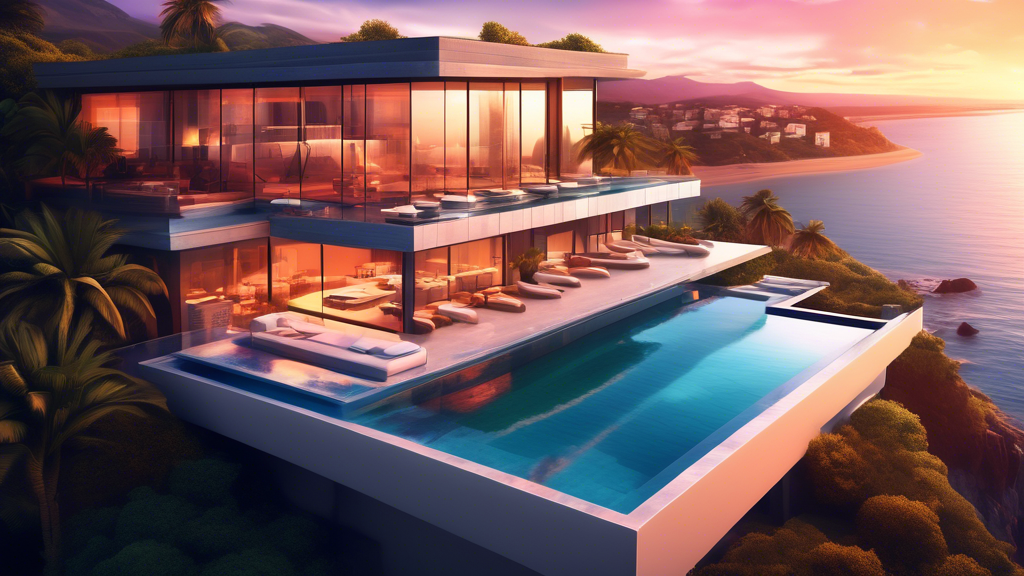
Professional Photography Tips For Stunning Real Estate Listings
In the competitive real estate market, high-quality photographs are
non-negotiable. They are the first impression potential buyers have of a
property, and they can make or break a sale. Stunning real estate photography
can captivate viewers, evoke emotions, and ultimately drive more
showings and offers. While smartphone cameras have improved significantly,
nothing can replace the skill, experience, and equipment of a professional
real estate photographer.
If you’re looking to elevate your listings and attract more buyers, here are
some professional photography tips to make your real estate photographs
stand out:
1. Preparation is Key
Before you even pick up your camera, spend time preparing the property for
its photoshoot. This step is crucial in ensuring the photographs capture the
property’s best features.
Declutter and Depersonalize:
A cluttered space can make a room appear smaller and less appealing. Remove
personal items, excessive decorations, and unnecessary furniture. Remember,
the goal is to help potential buyers envision themselves living in the
space.
Clean and Tidy:
Ensure the property is spotless, from gleaming floors to sparkling
windows. Dust furniture, wipe down surfaces, and vacuum thoroughly. Pay
attention to small details, as they can be noticeable in photographs.
Stage for Success:
Consider hiring a professional stager to enhance the property’s appeal.
Staging involves arranging furniture, adding decorative accents, and
creating a warm and inviting ambiance. A well-staged home can significantly
impact a buyer’s perception.
2. Master the Art of Lighting
Lighting is one of the most critical aspects of photography, and real
estate photography is no exception. Natural light is generally the most
desirable, so schedule your photoshoot during daylight hours.
Utilize Natural Light:
Open curtains and blinds to allow ample natural light to fill the rooms.
Soft, diffused light is ideal for interior photography, while bright,
direct sunlight can create harsh shadows. Experiment with different times
of day to find the best lighting conditions.
Balance with Artificial Light:
While natural light is preferred, there will be times when you need to
supplement with artificial lighting. Use lamps, overhead lights, and other
light sources to create a balanced and well-lit environment.
Consider the Color Temperature:
Different light sources have different color temperatures. Natural light
tends to be cooler, while incandescent lights emit a warmer tone. Ensure
the color temperature is consistent throughout the property to avoid
unnatural color casts in your photographs.
3. Compose Thoughtfully
Composition refers to the arrangement of elements within the frame. A
well-composed photograph draws the viewer’s eye to the subject and creates
a visually appealing balance.
Rule of Thirds:
The rule of thirds is a fundamental principle in photography that suggests
dividing the frame into nine equal parts using two horizontal and two
vertical lines. Place the points of interest along these lines or at their
intersections to create a more dynamic composition.
Leading Lines:
Use natural lines within the environment to guide the viewer’s eye through
the photograph. Hallways, staircases, and walkways can all serve as
leading lines, creating a sense of depth and movement.
Framing:
Look for elements within the scene that can frame the subject and draw
attention to it. Archways, windows, and trees can all be used as natural
frames, adding depth and interest to the composition.
4. Choose the Right Equipment
While a high-quality camera is essential for professional real estate
photography, there are other pieces of equipment that can significantly
enhance your results.
Wide-Angle Lens:
A wide-angle lens is crucial for capturing the spaciousness of a room.
These lenses have a wider field of view, allowing you to fit more of the
scene into the frame. However, use them cautiously, as they can distort
lines, especially at the edges.
Tripod:
A sturdy tripod is essential for keeping your camera steady, especially
when shooting in low-light conditions or using slower shutter speeds. A
tripod will also allow you to create panoramic images and ensure
consistent framing from shot to shot.
Remote Shutter Release:
Even the slightest camera shake can result in blurry images. A remote
shutter release allows you to trigger the shutter without touching the
camera, minimizing vibrations and ensuring sharp photographs.
5. Highlight Key Features and Amenities
Remember to capture the property’s key features and amenities. These are
the aspects that potential buyers are most interested in seeing.
Master Bedrooms and Bathrooms:
Showcase the master bedroom as a relaxing retreat and highlight the
features of the bathrooms. Capture the spaciousness, natural light, and
any luxurious finishes.
Kitchen:
The kitchen is often the heart of a home, so capture its best features,
including appliances, countertops, and cabinetry. Consider using props
like fresh flowers or a bowl of fruit to add a touch of personality.
Living Areas:
Highlight the comfort and functionality of the living areas. Capture the
flow between rooms and showcase any fireplaces, built-in shelving, or
other desirable features.
Outdoor Spaces:
Don’t neglect the outdoor spaces, such as patios, decks, and backyards.
These areas are becoming increasingly important to buyers, so showcase
their potential for relaxation and entertainment.
6. Post-Processing for Perfection
Post-processing is an essential step in professional real estate
photography. It allows you to enhance your images and correct any
imperfections.
Adjust Exposure and Contrast:
Ensure your images are properly exposed and have a good balance of
highlights and shadows. Adjust the contrast to enhance the overall depth
and dimension of the photographs.
Correct White Balance:
White balance refers to the color temperature of an image. Correcting the
white balance ensures that whites appear truly white and colors are
reproduced accurately.
Enhance Colors and Sharpness:
Subtly enhance the colors and sharpness of your images to bring out the
best in your photographs. However, avoid over-saturating colors or
sharpening too aggressively, as this can make images look unnatural.
7. Showcase the Lifestyle
Beyond capturing the physical attributes of a property, strive to convey
the lifestyle it offers. Help potential buyers envision themselves living
in the space.
Emphasize Natural Light:
Buyers are drawn to homes with ample natural light. Open curtains and
blinds to let in as much natural light as possible, creating a bright
and inviting atmosphere.
Highlight Outdoor Living:
Capture the allure of outdoor spaces, such as balconies, patios, or
backyards. Stage these areas with furniture and decor to demonstrate their
potential for relaxation and entertainment.
Showcase the Neighborhood:
Include a few photographs of the surrounding neighborhood, highlighting
nearby parks, schools, shopping centers, or other amenities that enhance
the property’s appeal.
8. Optimize for Online Use
In today’s digital age, most potential buyers will first encounter your
real estate photographs online. Optimize your images for online use to
ensure they load quickly and display beautifully across various devices.
Resize and Compress:
Large image files can slow down website loading times, leading to a poor
user experience. Resize your images to an appropriate resolution for web
use and compress them to reduce file size without sacrificing too much
quality.
Use Descriptive File Names:
Use descriptive file names that include relevant keywords, such as the
property address or neighborhood. This will help improve the
searchability of your images.
Add Alt Text:
Alt text is a brief description of an image that is displayed if the
image fails to load. It is also used by screen readers to describe
images to visually impaired users. Add relevant alt text to your images
to improve accessibility and SEO.
Conclusion
Professional photography is an invaluable investment when selling real
estate. Stunning photographs can capture the attention of potential buyers,
highlight a property’s best features, and ultimately lead to quicker and
more profitable sales. By following these tips, you can elevate your
listings and make a lasting impression on buyers. Remember, the right
photographs can be the difference between a property that sits on the
market and one that sparks a bidding war.





